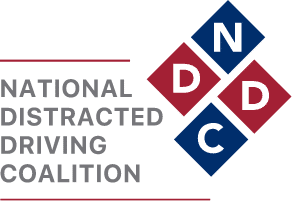education
Education is critical to behavior change. A key area of focus for the NDDC is to educate drivers of all ages, employers and community stakeholders about the risks and consequences of distracted driving. Increasing public awareness and helping road users learn to recognize when they are distracted can encourage safer choices among those using the roads.
5
2021 priority
Action item was completed with the creation of the National Distracted Driving Coalition website. It was first launched in 2021 and re-launched in early 2023, designed by GeekTown USA. It includes links to the outputs for many of the completed action items and will be continuously updated as more action items are completed.
6
2021 priority
The Insurance Institute for Highway Safety conducted a national survey in 2021, of 2,013 U.S. licensed drivers (ages 16 and older) to estimate the proportion of drivers according to demographic characteristics who regularly engaged in one or more secondary tasks across a variety of categories. Access the full press release and link to report: Smartphone apps drive gig workers, parents to distraction
7
2021 priority
8
2021 priority
9
These educational materials should be shareable and easily integrated into campaigns developed and delivered by many organizations at state and national levels. The FMCSA has “Our Roads, Our Safety Coalition” and may have some materials already available. Download: Sharing the Road with Commercial Vehicles
10
2021 priority
Cultivating a younger generation of drivers who avoid distractions while driving can accelerate a shift in social norms to discourage distraction. Young children and young drivers are important influencers of parental behaviors if they are empowered to speak up when parents are driving distracted.
Project: Under the auspices of the National Distracted Driving Coalition, this project is being lead by EndDD.org in partnership with researchers from Boston’s Brigham and Women’s Hospital and Harvard University. This project is designed to explore effective messaging about distracted driving for teen drivers. It is unique in that slogans and messages developed with teens during the first three phases of the project will be the foundation for the best high school film makers in the country to produce teen-specific PSAs. The study consists of five distinct phases with teens working with researchers in all phases. Those phases include:
- in-depth interviews;
- a national teen survey;
- working with advisory groups of students, teachers and coaches at several schools;
- working with talented high school film makers to produce PSAs; and,
- testing of messages/PSA’s with experimental and control group schools.
Press release:
The National Distracted Driving Coalition is promoting Oct. 20, 2022, as National Do Not Disturb While Driving Day to highlight the continuing danger of using a cell phone while driving and educate the public about a feature that can help drivers avoid distraction. https://usnddc.org/do-not-disturb-while-driving-day
Press release:
The National Distracted Driving Coalition (NDDC) strongly supports National Passenger Safety Week, which begins on Sunday, January 22 and encourages passengers to pledge to take action when their driver engages in distracted or unsafe behavior while responsible for their passengers’ safety. Empowering these passengers to speak up to reduce risky driving is the goal of this campaign. https://usnddc.org/national-distracted-driving-coalition-calls-on-passengers-to-speak-up
11
2023/2024 Priority
